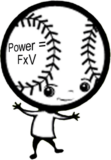There are many different types of fatigue that a pitcher can experience. Fatigue can be
muscular, mental, physiological or neurological. But no matter the type, the result is the same.
The athlete’s performance can go downhill and his body can become extremely vulnerable to
injury.
Because the pitching motion requires not only power but precise timing and coordination as
well, there are some easily observable changes to the pitcher’s mechanics that can help you
know that the pitcher has reached his maximum pitch count for that day.
Here are some of the changes that researchers have been able to observe when comparing the
mechanics of pitchers in their early innings vs. their late innings.
Lower body mechanics:
The stride starts to shorten
The stride landing starts to become unstable
The knee starts to bend too much at stride landing (leg collapses too low to ground)
The knee starts to straighten more excessively at ball release, especially if the pitcher
starts to become more upright during the delivery
The trunk starts to be more upright at delivery
Upper body mechanics:
The arm angle starts to lower (the elbow drops)
The arm looks like its rushing, especially if the legs have started to move more slowly
There is a decrease in external rotation of shoulder joint prior to acceleration (at
maximum external rotation position)
The pitcher changes his glove arm action (aims it too high at hand break or drops it too
low during rotation)
Pitching performance:
There will be a decrease in ball velocity
The pitcher will start missing his spots more than is usual
Connecting all the dots
A pitcher has an innate sense of his timing patterns and how long his pitching sequence takes.
If, due to fatigue, he spends too much time in one phase of his motion, he will automatically
rush another phase to make-up the time. Said another way, if a pitcher slows down his legs he
will speed up his arm.
When a pitcher’s lower body mechanics change, he will not transfer the same amount of energy
to his pitching arm. Thus, a decrease in velocity would be a direct result. Additionally, if range
of motion is lost at the level of the shoulder, there would be a decrease in the acceleration arc
which would also result in decreased velocity. When muscles fatigue, they have a decreased
ability to absorb energy. This, in turn, causes greater stresses for the joints and internal
structures.
While we know that there are changes in mechanics and performance when a pitcher is
fatigued, the slowing down of his body may be the body’s way of protecting itself to minimize
the risk of injury over the course of his innings. Since the success of a pitcher is based on his
ability to maintain his mechanics throughout the game, any obvious changes should be taken
seriously to prevent extra trauma or stress to the pitcher’s body.
